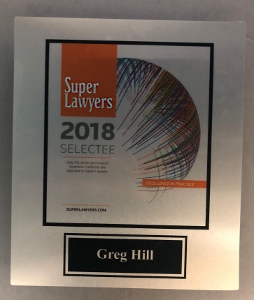In our experience, juveniles often commit multiple offenses in a short time. Sometimes the offenses are all minor; sometimes they are quite serious. When there is such an apparent “crimes spree,” a common question we hear is whether the juvenile will go to “juvenile hall,” prison or jail for an extended period, or at all. The discussion usually continues into a discussion of fire camp and home on probation (HOP).
The Gist of This Article: Welfare & Institutions Code § 733(c) restricts commitment of a juvenile to the Department of Corrections and Rehabilitation, Division of Juvenile Facilities (DJF), to those offenses listed under Welfare & Institutions Code § 707(b) or Penal Code § 290.008(c) and such an offense must be the most recently occurring of most recently committed offense. To see how this is applied, read the case summary here.
The case of D.B., a minor, seems to offer an example of such a “crime spree” and how punishment is determined. A petition was filed against him in juvenile court in Sacramento alleging nine counts from incidents over a few days. On May 23, 2010, while sixteen years old, he allegedly stole a car by punching its owner. This resulted in charges of robbery, battery and carjacking. Robbery is an offense included in Welfare and Institutions Code § 707(b), which lists those offenses for which a juvenile may be committed to the Department of Corrections and Rehabilitations, Division of Juvenile Facilities (DJF).

A week later, D.B. was stopped by a Sacramento police officer. The police officer asked D.B. for his name and D.B. gave a false name. D.B. then ran away, but he was caught by other officers. This resulted in charges of violating Penal Code § 148 (a)(1) (“resisting a police officer”) and Penal Code § 148.9(a) (“giving false identification to a police officer”). Neither of these offenses are included in Welfare and Institutions Code § 707(b).
After trial in the matter, the judge sustained the petition (determining that D.B. had committed all offenses). He then ordered that D.B. be committed to DJF.
D.B. promptly appealed, arguing that Welfare and Institutions Code § 733(c) only permitted commitment to DJF if the “most recent offense alleged… is described in Welfare and Institutions Code § 707(b) or Penal Code § 290.008(c).” Therefore, because resisting a police officer and giving false information to a police officer, D.B.’s most recent offenses, were not listed in 707(b) or 290.008(c), the court could not commit D.B. to DJF.

The trial court ruled that “most recent offense” as used in 733(c) merely referred to the offenses listed in the most recent petition, not the specific offenses.
The Third Appellate District disagreed. In
People v. D.B. (2012 DJDAR 15092), it instead agreed with D.B., finding the trial court erred. The appellate court found no ambiguity in the statute. Simply put, “most recent offenses” means the most recently occurring offense only.
The appellate court further discussed section 733 as a whole, nothing that no juvenile under eleven years of age can be committed to the DJF or anyone suffering from any “contagious, infectious, or other disease that would probably endanger the lives or health of the other inmates.”
Turning specifically to Section 733(a), the appellate court found no basis for “most recent offenses” to apply to the date of the petition. It noted that such a strained interpretation would ignore the plain meaning of an unambiguous statute. Moreover, it noted that a court could only ignore a literal interpretation of a statute if it would yield absurd results.
People v. Albillar (2010) 51 Cal.4th 47, 55. Here, however, a literal interpretation does not produce absurd results. After all, the appellate court noted that the purpose of section 733(c) was to reduce the number of youth offenders housed in state facilities. The legislature chose to implement this by targeting currently violent or serious offenders by looking at their “most recent offense.”
Consequently, the appellate court sent the case back to the juvenile court with instructions to reverse the order committing D.B. to the Department of Corrections and Rehabilitation, Diversion of Juvenile Facilities.
The citation for the California Supreme Court ruling discussed above is In re D.B. (2014) 58 Cal.4th 941, 169 Cal.Rptr.3d 672, 320 P.3d 1126.
For more information about sentencing a juvenile, click on the following articles:
- Underage DUI Is Not Similar to a Juvenile Offense for Sentencing in a Later Drug Case
- Juvenile’s Sentence of 254 Years for Four Non-Homicide, Sex Crimes Set Aside
- Thirty Years to Life Sentence for Juvenile Sex Crime Defendant Not Cruel and Unusual Punishment
Contact Greg Hill & Associates

